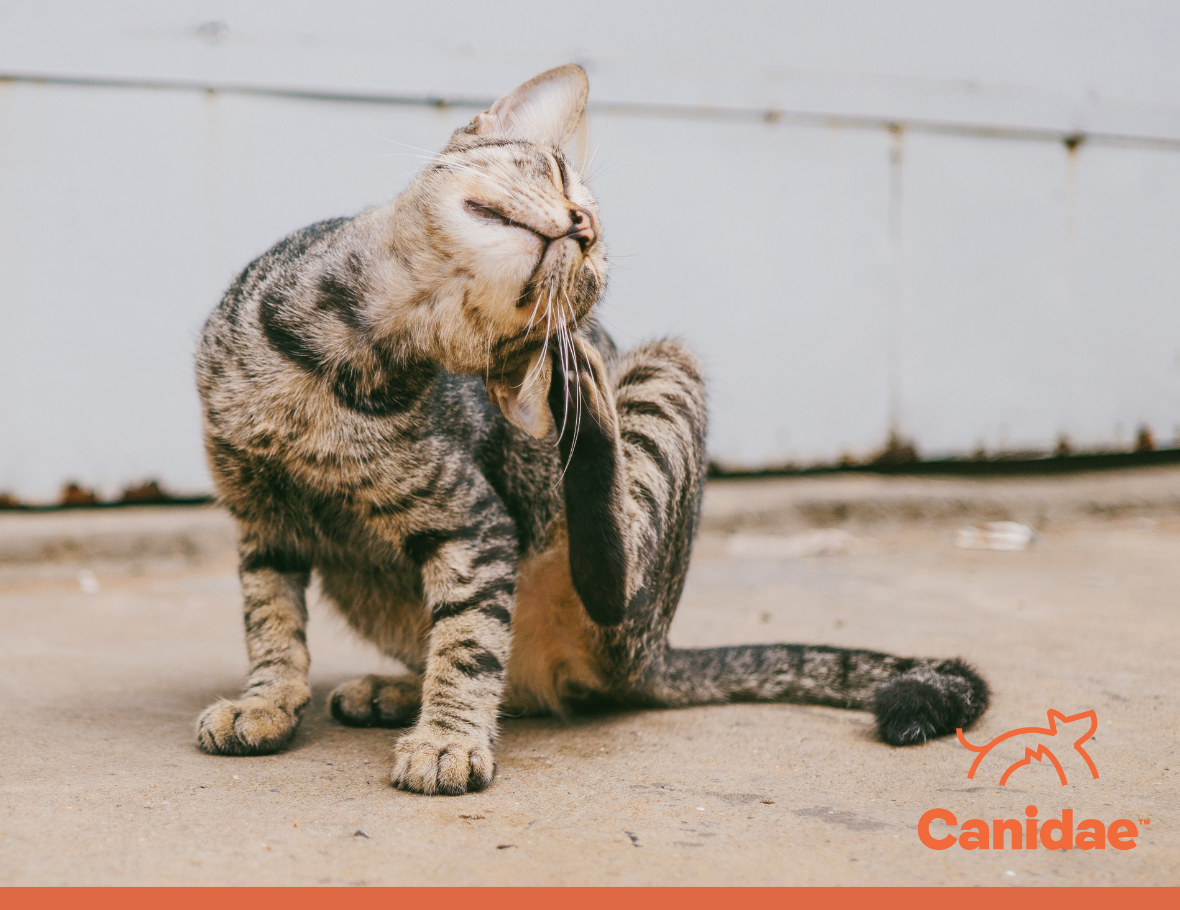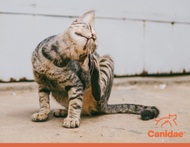Why Does My Cat Have Dandruff?

If you’re wondering “can cats get dandruff?” the answer is yes, and the truth is, almost any creature with hair, fur or feathers can get it, so it’s not uncommon to spot white flakes in your cat’s fur.
While it typically isn’t serious, conditions that can lead to cat dandruff can cause discomfort in your kitty. In more severe cases, cats may scratch or lick their skin raw, so it’s important to investigate the cause of dandruff as soon as it appears. Join us as we look at the causes and of course, how to get rid of cat dandruff.
What Is Cat Dandruff?
Dandruff is a common term used to refer to white flakes present in the cat’s haircoat. White flaky specs are most commonly observed on the back and close to the base of the tail. They may also be spotted on furniture and bedding.
Dandruff most often occurs due to the overproduction of oil by skin cells, but there are numerous potential causes of dandruff in cats. If your cat has dandruff, you may notice her scratching more than usual.
Why Does My Cat Suffer From Dandruff?
Cats can develop dandruff for several reasons, including:
Environment
Dry skin is a potential cause of flakes. A low humidity environment — for example, an overly warm, dry house in the winter — can also result in skin dryness. On another note, a stressful environment can lead to excessive grooming — which may also result in skin problems.
Potential Health Issues
While not always the case, cat dandruff can sometimes signal a more pressing health issue. Cats with health concerns such as obesity, diabetes, arthritis, hyperthyroidism, kidney disease and more are often unable to groom themselves properly — either because they physically cannot reach all areas of their bodies or because they don’t feel well enough to groom themselves. Cats with underlying health issues tend to be more prone to the development of skin diseases that can result in dandruff.
It’s worth remembering that cats can also be affected by parasites like mites, fleas and lice. There is even a curiously-named condition called ‘walking dandruff’ that is caused by the Cheyletiella mite.
Additionally, dandruff can sometimes be a sign of infection. Bacterial infections or fungal infections such as ringworm are possibilities. Ringworm is highly contagious and can affect humans, so it is important to provide appropriate treatment as soon as possible.
Allergic diseases and cancers like cutaneous lymphoma must also be added to the list of potential causes of feline dandruff.
Dietary Issues
Just like humans, cats need a balanced diet to remain healthy. Sometimes, low-fat diets can result in dry flaky skin in cats. Omega fatty acids from fish oil are particularly helpful for maintaining healthy skin, so if your cat’s diet lacks these essential nutrients, this may be the cause of their dandruff.
Treating Your Cat’s Dandruff
Because the condition of your cat’s skin can tell your veterinarian a lot about their overall health, it’s a good idea to get your vet’s input regarding your cat’s dandruff before attempting treatment.
If your cat has an underlying medical condition, once it is addressed, the dandruff may resolve. For instance, if an overweight cat loses weight, their ability to reach those harder to get to grooming spots will improve; when older cats with arthritis are treated, they will be more limber and able to groom better; cats treated for renal disease will start to feel better and subsequently increase their grooming.
Once underlying health conditions are ruled out or addressed, there are several things you can try to improve the condition of your cats’ skin. Dandruff is often easily treated at home with some slight changes to your cat’s lifestyle.
Groom Your Cat
Gently brush your cat with a brush or comb two to three times a week to remove loose hair and softly brush out any matted hair. Always brush in the direction of hair growth. This will help keep your cat’s skin healthy and remove dead skin, plus it gives you some gentle quality time with your favorite feline!
Keep Your Cat Fit
Your cat’s overall health affects his skin health, and cats that maintain a healthy weight are able to groom themselves more effectively. We love this article on how to create a weight loss plan for cats.
Keep Your Kitty Hydrated
The more hydrated your cat is, the healthier their skin will be! Does your cat prefer running water? There are some great water fountains you can buy to encourage them to drink more. Remember, wet food is another great way to add water to your cat’s diet.
Feed Your Cat a Nutritious and High-Quality Diet Rich in Omega-3s
Look for cat food that contains the fish or fish oil that provides your cat with all-important omega-3 fatty acids, such as CANIDAE® Goodness for Skin & Coat.
This dry cat food is made with real salmon as the first ingredient and contains omega 3 and 6 fatty acids. Omega-3 is a classification of fatty acids. These fatty acids have anti-inflammatory properties, making them a great choice for cats who have allergies or suffer from dry skin. Fatty acids help give your cat a fuller, shinier coat, and improve the overall health of your cat’s hair follicles.
Dandruff in cats can be a minor issue or a sign of a more serious health condition. If it is a persistent problem, make sure to visit your veterinarian.
Are you ready to transition your cat to Canidae? Learn more here!


